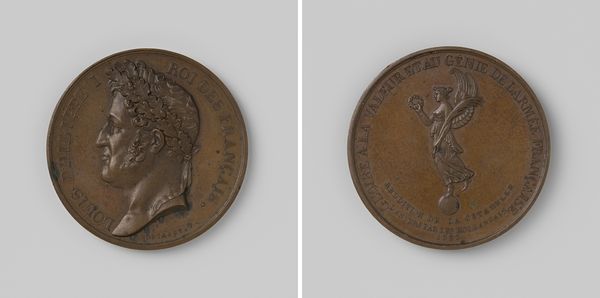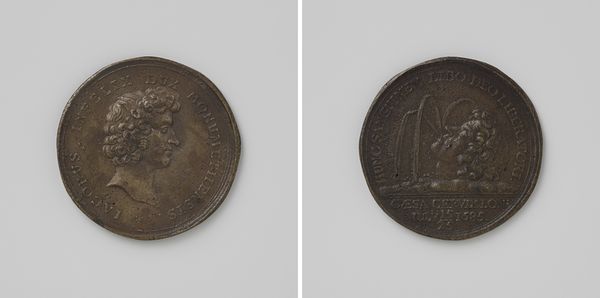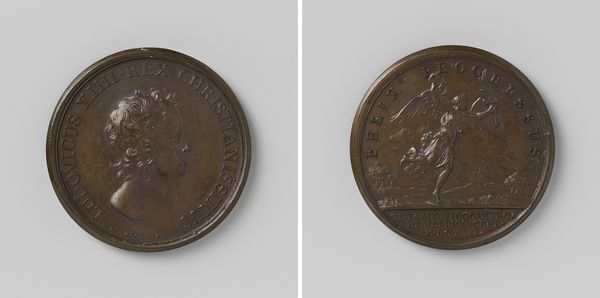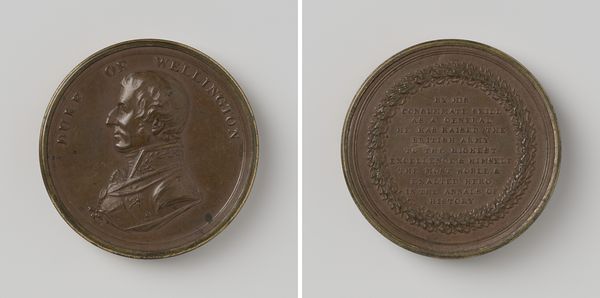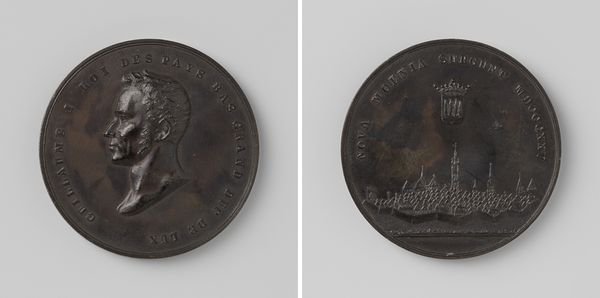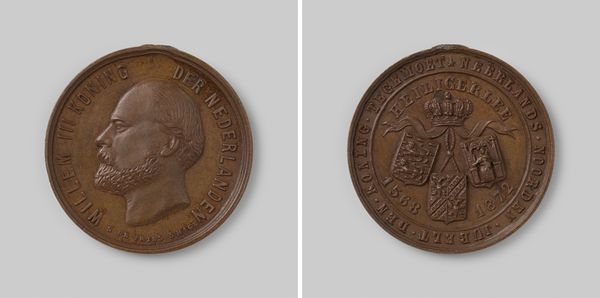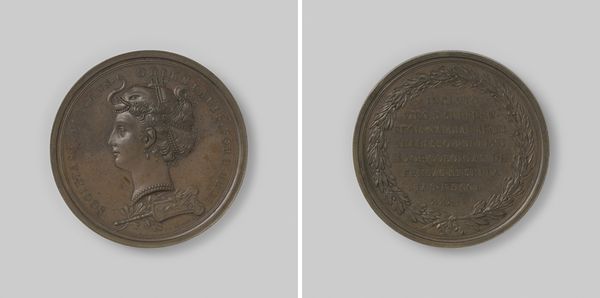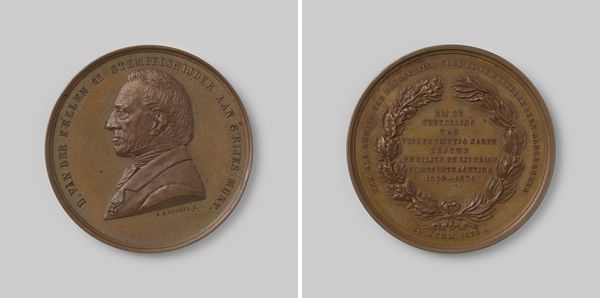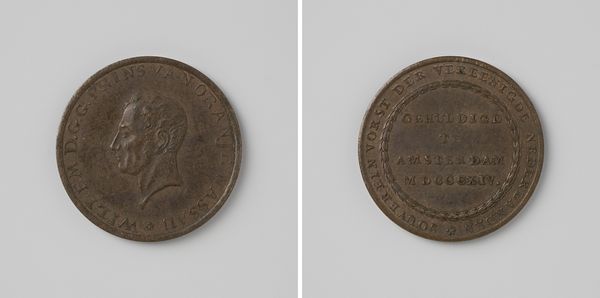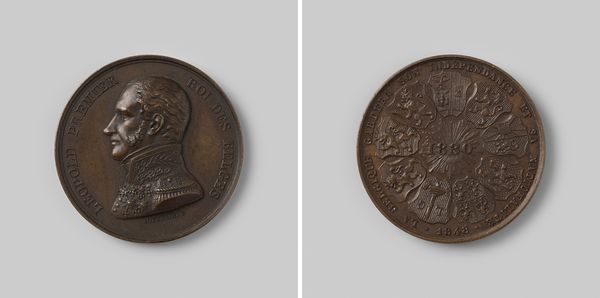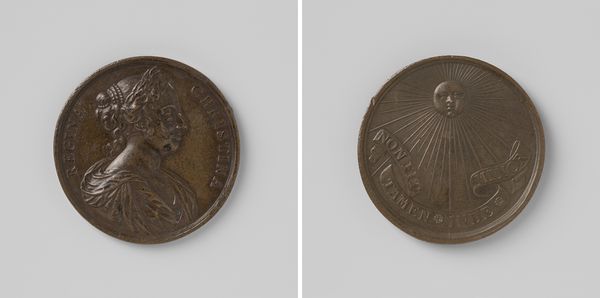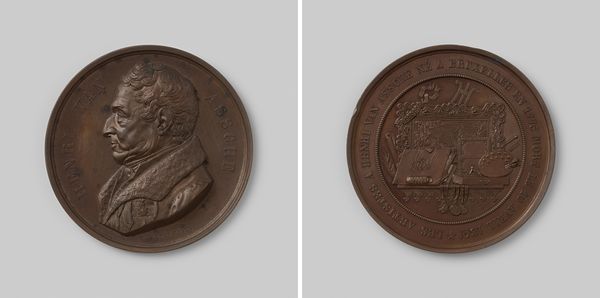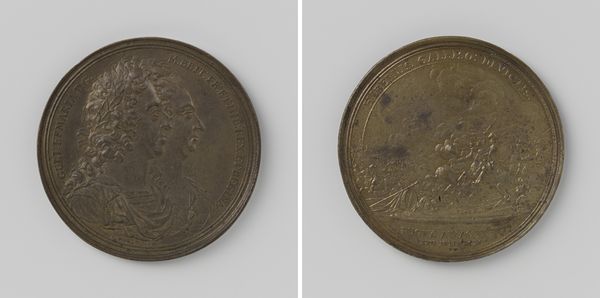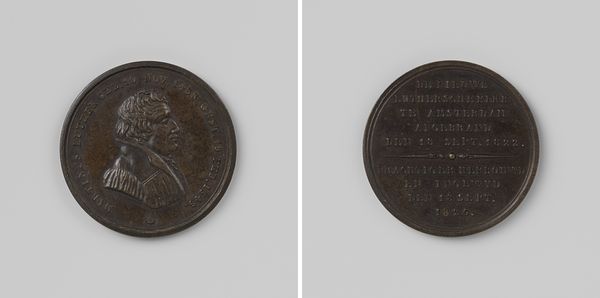
relief, bronze, sculpture, engraving
#
neoclacissism
#
sculpture
#
relief
#
bronze
#
sculpture
#
history-painting
#
engraving
Dimensions: diameter 2.6 cm, weight 8.41 gr
Copyright: Rijks Museum: Open Domain
Editor: This is a bronze engraving by Jean Pierre Montagny, dating back to 1836, titled "Oprichting van de obelisk van Luxor 1836." It seems to be a commemorative medal, and the obelisk appears very slender and tall, emphasizing its imposing size. What do you see in this piece beyond a simple depiction of historical achievement? Curator: What strikes me immediately is the clear invocation of power and cultural appropriation embedded within this seemingly simple medal. It's not just about the "achievement" of raising an obelisk. We need to think about *how* that obelisk came to be in Paris in the first place. Can we see this act reflected in other instances of this kind? Editor: That’s true; it was taken from Egypt, right? It’s easy to forget the colonial context looking at something like this. Curator: Exactly. The obelisk, an ancient Egyptian symbol of power and divinity, becomes a trophy, a symbol of French dominance. Consider the inscription surrounding the obelisk. Who benefits from that narrative? And who is erased? It serves to legitimize the colonial project and normalize cultural extraction. Editor: So the medal becomes a piece of propaganda in a way, reinforcing those power structures. It is not simply an innocent historical artifact. Curator: Precisely. This seemingly celebratory object asks us to question the ethics of acquisition, the role of museums as repositories of colonial loot, and the ongoing struggle for repatriation. How does this historical perspective challenge our understanding of contemporary cultural exchanges? Editor: It really makes you consider the power dynamics at play behind even seemingly celebratory images. I had thought it was a fairly straightforward memorial. I have a totally different view of this artwork now, seeing the deeper implications of colonialism. Curator: Hopefully, this pushes us all to see art, including its creation and reception, as always entangled within complex social and political landscapes.
Comments
No comments
Be the first to comment and join the conversation on the ultimate creative platform.
